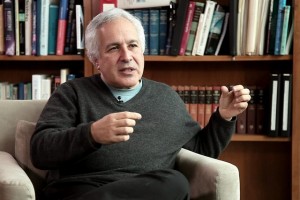Dopamine system
Psychologist Samuel McClure on neurotransmitters, errors in prediction, and neuromarketing

Memory formation and retention have long been one of the greatest mysteries of neurophysiology. While psychologists often conceptualize memory and the mind as abstract entities, neurophysiologists focus on understanding the material traces of memory within the brain. The challenge lies in identifying the physical processes and molecules involved in memory creation and storage. Below are five key insights into the material basis of memory, its dependence on proteins, and the role of specific molecules in neural connections.
Unlike a radio receiver, which merely reproduces sound, the human brain retains traces of past experiences. For instance, if we have previously heard a melody, we remember it. Upon hearing the first few notes of that melody again, even if the music stops, our brain can recreate the subsequent notes. This ability suggests that the brain contains material traces of what we have experienced and learned.
Scientists have been searching for these traces for thousands of years. The earliest theory of memory developed three thousand years ago, imagined the brain as a collection of clay tablets on which information was inscribed, stored, and retrieved when needed. However, despite centuries of investigation, researchers have struggled to identify any definitive physical traces of memory.
Interestingly, some hypotheses propose that memory is not merely stored but actively generated each time it is recalled. For example, when we recognize a familiar melody, we are not simply retrieving it from a stored “file” but recreating it anew.
Memory relies on complex processes, the material basis of which remains a significant challenge for modern neurophysiology. Understanding these processes requires sophisticated and often tricky approaches. Before 2006, scientists had a degree of pessimism due to the established link between memory and proteins. Experiments demonstrated that blocking protein synthesis in animals or humans prevented long-term memory formation, though short-term memory remained unaffected.
For instance, if protein synthesis is inhibited for two to three hours after a learning event, the subject will not retain the new information. This finding suggests that synthesising new proteins is essential for memory consolidation and retention. However, there is a significant complication: proteins have a short lifespan. Most proteins degrade within a few days or weeks and are continuously replaced. Approximately 98% of all proteins are broken down and replenished every three to four days.
This raises a perplexing question: if memory is encoded in molecular structures, how can it persist for years or even decades while the proteins it relies on degrade and are replaced? This paradox continues to challenge scientists and drive research into the mechanisms underlying long-term memory.
Despite various hypotheses suggesting that memory is either generated anew or formed during each act of recall, these processes inevitably rely on some material traces within the brain. Scientists have explored numerous biochemical and molecular systems, searching for molecules uniquely responsible for memory.
Early research revealed that virtually all cellular systems are essential for memory. For example, disrupting the system that maintains the neuronal membrane causes the cell to degrade, resulting in memory loss. This finding demonstrated that nearly every biochemical system within a cell is necessary for memory formation and other critical functions. Identifying molecules or mechanisms specific to memory remains challenging, as they appear deeply intertwined with the cell’s broader biological processes.
For many years, scientists struggled to identify any specific molecule responsible for memory. However, in 2006, several groundbreaking studies introduced a candidate that could be described as a “memory molecule.” This protein molecule is found at critical points in the nervous system—specifically at the synaptic contact, where neurons communicate.
Neurons transmit information electrically within the cell and chemically to neighbouring cells. The synaptic contact is where electrical energy is converted into chemical signals, enabling the transmission of information across neural networks. The efficiency of these synaptic connections determines the strength of communication between neurons, making it a fundamental factor in memory formation.
A molecular system regulating synaptic efficiency was identified, with a specific molecule at its core. This molecule manages the transport of receptors to the synaptic region, effectively controlling other proteins. Interestingly, when this molecular system is disrupted or entirely blocked in experiments, the subject’s basic functions—such as movement, feeding, and even the ability to learn—remain unaffected. However, elements of long-term memory are lost. This suggests that while the system is not essential for overall survival, it is crucial for storing long-term memory. Notably, it does not participate in short-term memory formation.
Further research revealed a remarkable property of these molecules: they can self-replicate. When these molecules accumulate in specific areas of the nervous system, their increased presence can sustain itself over time. This self-replication mechanism is integral to memory maintenance. Scientists have even begun to understand how to create artificial analogues of such molecular systems, opening new avenues for memory research and potential applications in neuroscience.
Today, we have a growing understanding of the molecular mechanisms involved in forming and storing various types of memory. This knowledge can allow us to control these processes, improving or impairing memory. However, significant challenges remain. For instance, an average vertebrate animal has around 10 billion neurons, while humans have up to 100 billion. Each neuron forms approximately 10,000 connections with its neighbours. Only a few thousand of these trillions of synaptic connections during learning may change to encode memory.
It is impossible to identify or manipulate specific synaptic connections associated with memory precisely. Although nature effortlessly handles this task, the necessary technologies to achieve this level of precision have yet to be developed. Progress in this area may come not from classical electrophysiology or neurophysiology but from the emerging field of neurogenetics.
Research into the molecular basis of memory has revealed that it is not governed by a single molecule but rather by a family of homologous molecules. These molecules participate in various forms of memory, working with different mediators. The fundamental principle remains the same: an increase in the number of specific protein molecules in a particular region of the nervous system leads to long-term changes in the efficiency of that system’s functioning—essentially, the creation of a memory.
This molecular system exhibits a unique, self-sustaining mechanism that allows it to maintain its presence indefinitely. At the same time, it is susceptible to targeted alterations under certain conditions. Research into this system has become one of the most dynamic areas in modern neurophysiology, offering promising avenues for understanding and potentially manipulating memory processes.

Psychologist Samuel McClure on neurotransmitters, errors in prediction, and neuromarketing

Neurobiologist Jeff Lichtman on brain cell connections, Golgi stain, and big data in neurophysiology

Neuroscientist Sylvain Baillet on the Human Brain Project, implementing the brain in silico, and neural networ...